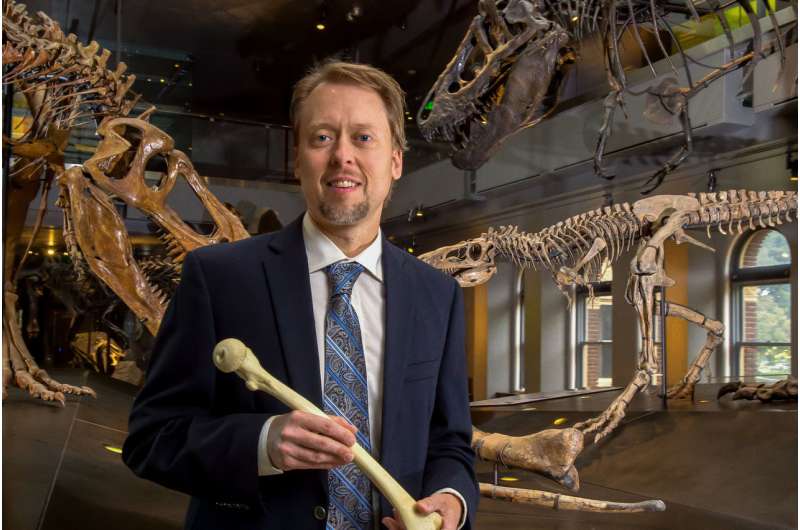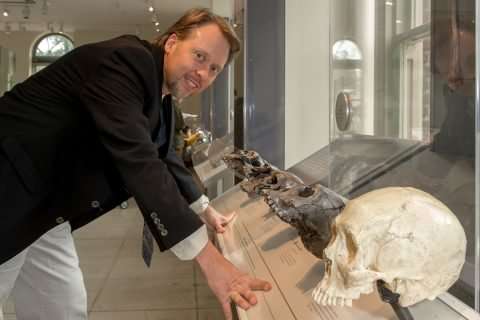A paleontologist who teaches anatomy is good for medicine and science

Some students are surprised to learn that their gross anatomy professor is a paleontologist—that's a scientist who studies fossils, right? My research is actually focused on the origins and evolution of humans today, during the period from about 6 million years ago to present day. Teaching anatomy at the Keck School of Medicine of USC has benefits in both directions: I bring the history of the human body's development to how (and why) it works as it does today. And lecturing future physicians on a campus with three hospitals benefits my science research into our past.
Science and medicine have in common that we don't only want to know what happens, we want to know why. In anatomy class, for example, I teach students that shoulder dislocations are a common injury they will see in patients. Falls or sports injuries are often causal factors. But why is the shoulder so vulnerable to dislocation in the first place?
Paleontologists theorize that it's because over the last several millions of years, the way in which we use our upper limbs has changed dramatically. Humans who evolved manipulatory capabilities—those who could make and use tools—survived better than our ancestors who did not. At the same time, since we don't use our arms to move around like chimpanzees, our upper limbs, especially shoulders, have evolved away from being more mobile as they were in our ancestors millions of years ago.
In the present day, by examining living patients whose types and levels of activities vary, we've learned that human bones reinforce themselves differently based on what stresses are placed on them. So we can look back at the arm and leg bones of our ancestors from millions of years ago and tell by their patterns of bone development—bones usually reinforce their walls along directions in which they are stressed over time—if the owner of these bones spent their time moving in meandering paths through trees or if they had come out of the trees and lived most of their lives walking through less three-dimensional surroundings. These insights offer crucial information about how our ancestors interacted with their environment.

How basic science and clinical medicine overlap
Another way that basic science research and clinical medicine overlap is that neither field seeks a single, know-it-all answer for what's happening or why. We develop hypotheses, which over time may be supported or not through careful testing. A good scientist and a good physician have that in common: Neither would claim to have the definitive and final answers for anything, but both would base inferences on what is known at the time. This can be frustrating and confusing for patients who seek a guaranteed diagnosis and a foolproof treatment, or students who want definitive answers about the past.
But it's better for both that we're always learning and always willing to have our minds changed by new evidence. Today's athletes, for example, are pushing past boundaries once thought impossible in speed, distance, strength and stamina. How does that affect their bodies, and how do their bodies adapt to these record-breaking physical demands?
I'd love to work with world-class USC athletes to better understand how their bodies structurally reflect their training—when they're not injured. It could benefit medicine by leading to ways to combat reduced bone strength, either resulting from age-related processes or from osteoporosis. And it could advance science by teaching us more sedentary types about how we came to have the bodies we do, at a pace slightly faster than waiting for evolution to run its course.
Provided by University of Southern California





















